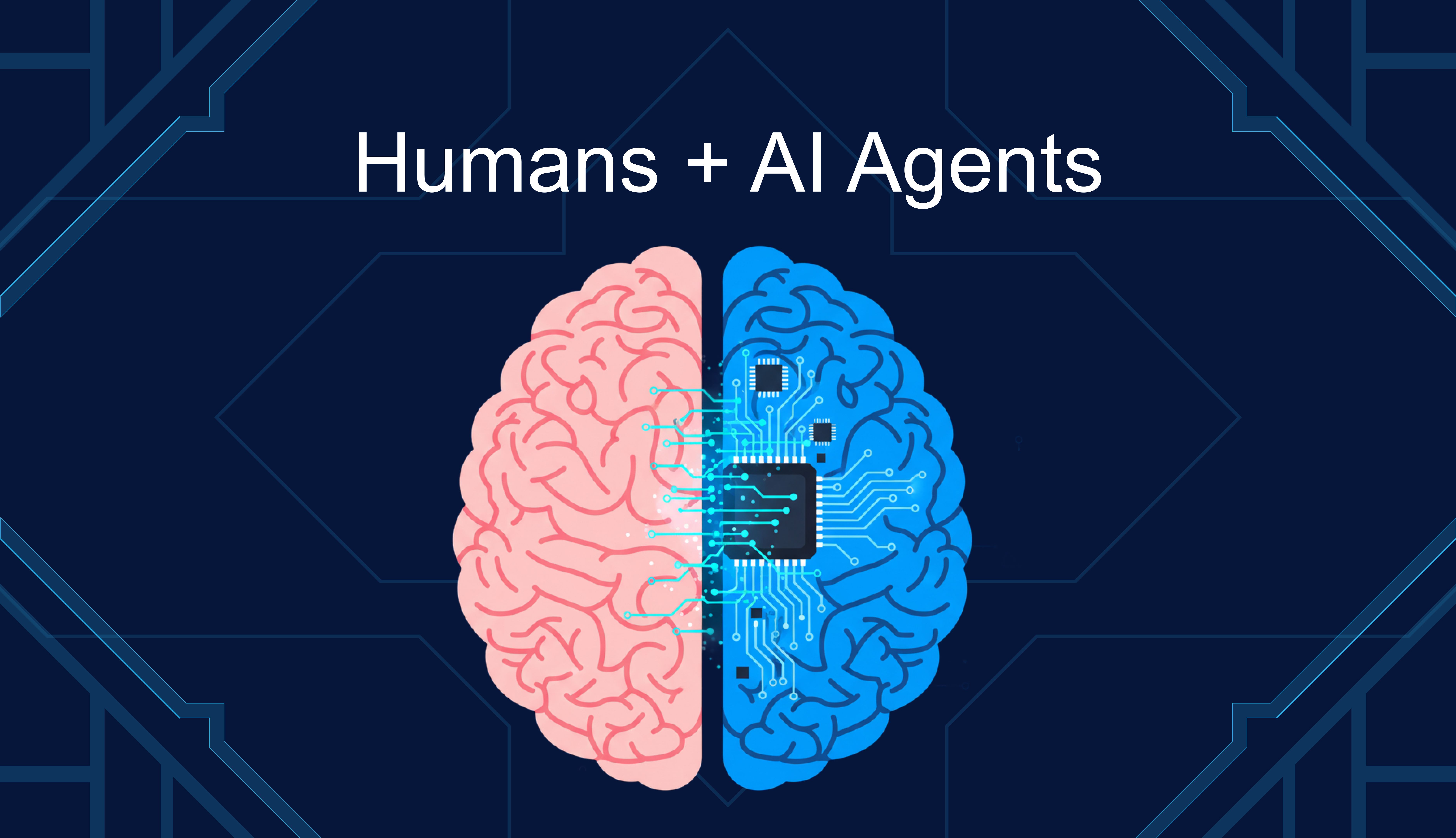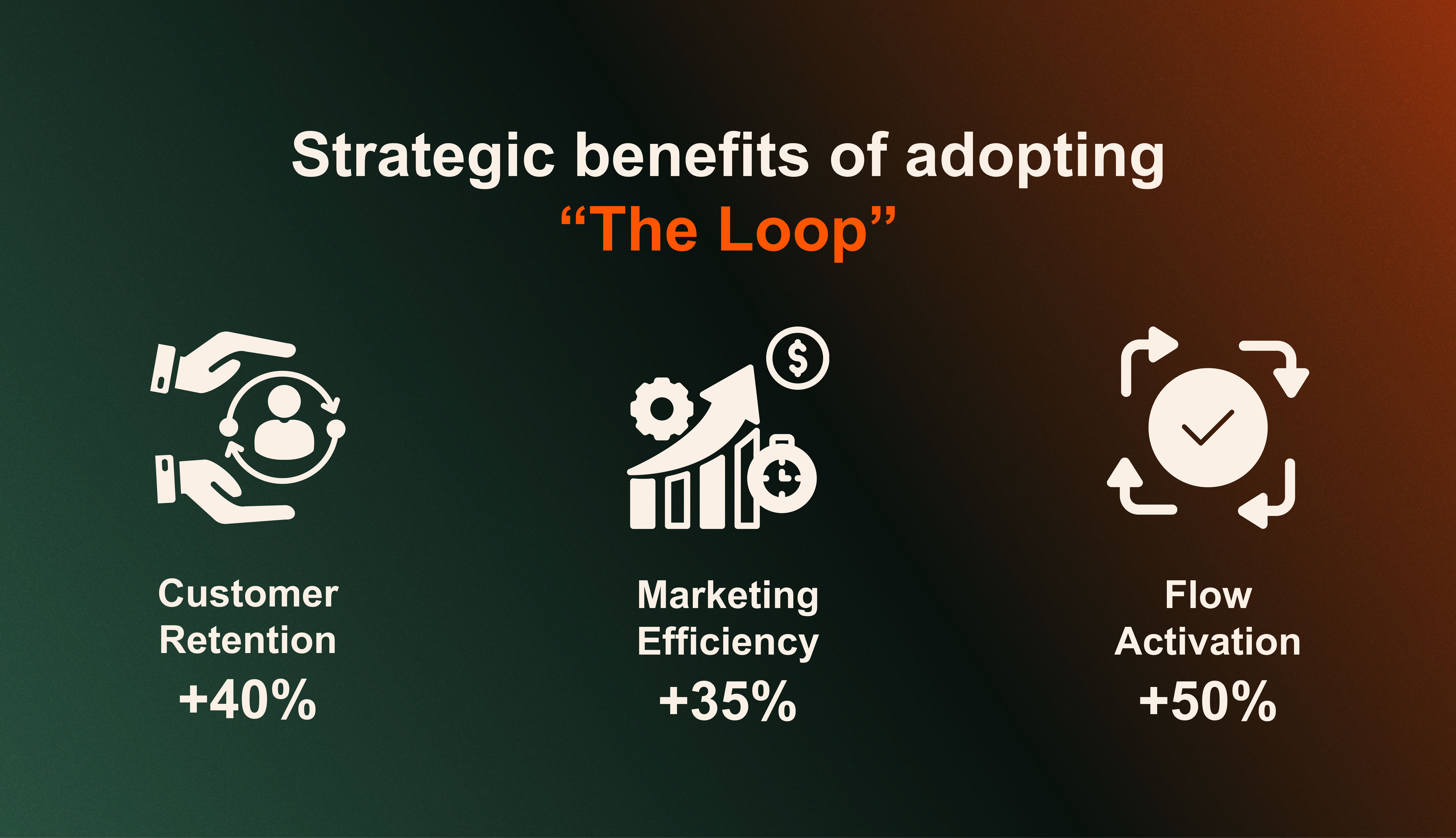HubSpot’s The Loop redefines marketing in the AI era. Learn how it replaces the traditional funnel and transforms customer relationships.

This year, the Meetlabs team traveled to San Francisco to attend INBOUND 2025, HubSpot’s flagship event that annually brings together thousands of professionals in marketing, sales, and technology. The energy at the Moscone Center was palpable: over 15,000 attendees, keynotes from industry leaders, and dozens of groundbreaking launches shaping the digital landscape.
For us, attending wasn’t just a corporate trip, but a strategic opportunity for learning and inspiration. From day one, we sensed that something big was about to be revealed—and we were right. During the keynote by Yamini Rangan (HubSpot CEO) and Karen Ng (EVP of Product), we witnessed a historic moment: the official unveiling of The Loop, a new growth playbook designed to replace the traditional conversion funnel.
HubSpot’s proposal is far from minor. The Loop represents a radical shift in how we understand marketing and business growth in the age of artificial intelligence. This model doesn’t just aim to optimize digital tactics; it seeks to redefine the relationship between brands and people in a context where consumer attention is fragmented, AI algorithms dominate information discovery, and the pace of change leaves no room for pause.
At Meetlabs, we interpret this announcement as a clear signal: we are entering an era where human authenticity and technological efficiency must coexist. The human side brings clarity, voice, and purpose; AI, on the other hand, provides scalability, personalization, and speed. Together, they form the foundation of a growth ecosystem that is both sustainable and adaptable to the future.
For years, digital marketing relied on the classic funnel: attract traffic, nurture leads, and ultimately convert. This structure, inherited from the logic of traditional sales, worked for a long time as a strategic guide. However, at INBOUND 2025, Yamini Rangan made it clear that this model no longer reflects today’s complexity. The customer journey is no longer linear—it is unpredictable, fragmented, and accelerated.
In HubSpot’s words: “The funnel is broken. What we need now is a dynamic, ever-learning model: The Loop.”
The funnel was built under a “capture and close” paradigm, useful in mass, linear campaigns. But today’s digital customers don’t follow a single path: they research, compare, drop off, return, share, demand personalization, and expect instant answers. The funnel doesn’t account for this back-and-forth.
The Loop, in contrast, was designed for this new reality. Its key advantages include:
This shift doesn’t depend solely on more sophisticated tools. It requires a different organizational mindset, where every customer touchpoint is seen as part of an endless cycle. It means:
Ultimately, the end of the traditional funnel is not a loss, but a natural evolution toward a more human, dynamic, and resilient model. With The Loop, HubSpot envisions a future where brands don’t just pursue conversions, but instead build trust-based relationships that grow over time.

HubSpot defines The Loop as an infinite growth cycle that adapts in real time and is composed of four phases:
Before creating AI-driven content, you must be clear about your voice, tone, and style. It’s not about producing more—it’s about doing it authentically.
Example: Morehouse College integrated its brand voice guidelines into HubSpot and achieved a +30% increase in visits and a +27% increase in time on site.
The challenge is no longer about adding someone’s first name to an email, but about delivering one-to-one relevance at scale.
Example: Kelly Services boosted conversions by 60% using this approach.
Content is no longer concentrated in blogs. Today, diversification is key:
Example: HubSpot invested in YouTube, podcasts, and newsletters, achieving +100% growth in YouTube leads and +90% growth in newsletter leads.
Marketing is no longer a “cruise ship” that takes months to turn—it’s an agile jet ski. With AI, the key is iteration:

One of the most disruptive announcements at INBOUND 2025 was the emphasis on the transition from SEO (Search Engine Optimization) to AEO (Answer Engine Optimization). This shift is not just a technical adjustment—it represents a deep redesign of how brands position themselves in front of their audiences in a world governed by AI-driven engines.
For two decades, SEO was the foundation of digital marketing. The strategy focused on:
The ultimate goal: to appear among the top 5 organic results, where more than 70% of web traffic is concentrated.
Today, the dynamic has radically shifted. With the introduction of AI Overviews in Google and the rise of LLMs (Large Language Models) such as ChatGPT, Gemini, and Claude, users no longer click in the same way—they expect immediate and reliable answers without having to navigate through multiple pages. This is where AEO comes in:
This difference is significant. According to HubSpot, leads originating from AI-driven engines convert 3x faster than those acquired through traditional SEO. Why? Because they arrive with a higher level of trust: the user is not comparing ten links but instead accepting the AI’s response as valid. This means that being cited in these answers provides an exponential competitive advantage.
Adopting an AEO strategy doesn’t mean abandoning SEO, but rather complementing it with new practices:
In conclusion, AEO is the new battleground of digital marketing. Companies that quickly adapt their strategies will not only appear in the top search results but also become the preferred answer of artificial intelligence.
Beyond marketing, Yamini Rangan and Karen Ng used the INBOUND 2025 stage to address a topic that goes far beyond commercial strategy: the future of work in the era of artificial intelligence. Their vision is clear and compelling: success will not come from choosing between humans or machines, but from building hybrid teams where humans lead and AI accelerates.
HubSpot outlined three key roles that will shape the future of work:
This transformation also brings a cultural shift:
Yamini’s closing thought captured the magnitude of this shift: “The future doesn’t belong to the best AI or the best humans, but to the best hybrid teams.”
This redefines the work paradigm: organizations that successfully combine human strategic intelligence with AI’s accelerated execution will be the ones leading the next decade.
At Meetlabs, we fully align with this vision. We believe the future of work will not be a competition between humans and machines, but rather a strategic alliance that opens a new horizon of innovation, productivity, and sustainable growth.

During the event, HubSpot shared concrete data and real-world impacts already observed in organizations that have begun applying this model. The numbers speak for themselves:
Beyond the percentages, what’s truly at stake here is a profound shift in vision. At Meetlabs, we interpret it this way: “The Loop” is not merely a technical innovation—it is a new mental framework. It means moving away from seeing the customer as a simple “target” within a funnel, and instead viewing them as a partner in constant evolution, where each interaction opens a new opportunity for learning, personalization, and loyalty.
In this sense, adopting The Loop is not just an operational decision—it is a long-term strategic commitment for any organization seeking relevance and sustainability in the digital era.

One of the great strengths of INBOUND 2025 was that it didn’t stay in the realm of theory—it offered practical pathways for companies to begin implementing the model. Based on our experience, here are some key recommendations:
In short, starting to apply The Loop involves an exercise in organizational transformation. It’s not enough to simply add new tools—it requires a shift in the way companies think, plan, and execute. At Meetlabs, we see this model as a unique opportunity for businesses to evolve toward a more human, efficient, and future-ready dynamic.
HubSpot’s The Loop is not just the end of the traditional funnel—it’s the beginning of a new stage where marketing and sales stop being linear processes and instead become a dynamic, continuous, and ever-evolving cycle.
For Meetlabs, witnessing its presentation at INBOUND 2025 confirmed that we are not facing a passing trend but a true paradigm shift. The Loop combines the best of human authenticity—voice, strategy, empathy—with the efficiency of artificial intelligence, which brings speed, scale, and real-time personalization.
Companies that adopt this model will not only see improvements in metrics like conversion or retention—they will achieve something even more valuable: building sustainable trust-based relationships, creating frictionless digital ecosystems, and positioning themselves as leaders in an increasingly competitive market.
The message is clear: the future does not belong to those who insist on optimizing a broken funnel, but to those who dare to close the loop, learn from every interaction, and evolve alongside their customers. That is the path to growing better in the era of AI.